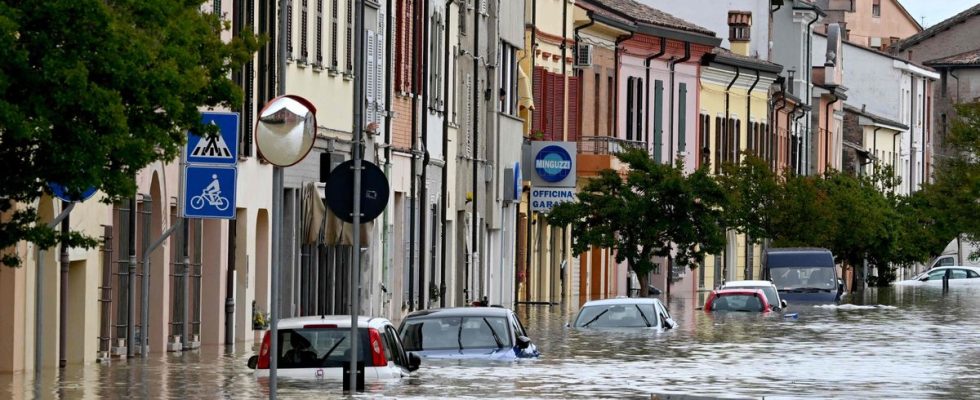After the rain, nothing. The dantesque rainfall that fell this week on northern Italy has, according to AFP, drowned the kitchen of Fred Osazuwa, resident of Faenza, under two meters of water, before embarking everything by withdrawing. The floods killed 14 people in Emilia-Romagna, according to the latest report from the Italian authorities. The extent of the disaster is not yet fully measured, quantified. But at this time of year, the phenomenon calls out.
Can we experience floods of the same kind in France? “The answer is yes, we have already experienced it in the past. What is less classic is the season”, underlines the climatologist Christophe Cassou, questioned by 20 minutes. Indeed, the overflowing mountain streams, the sudden and abundant rains, the Mediterranean rim knows well. “Usually, it happens rather at the beginning of autumn, after the summer months which have heated the Mediterranean”, specifies Guillaume Séchet, meteorologist and founder of the site. meteo-cities.com.
Languedoc, ideal candidate
Except that there, spring isn’t even over. But this winter, the Mediterranean remained warm, indicates the weatherman of BFMTV, and “acted like a cauldron”. And again, in the drama, Emilia-Romagna avoided an aggravating factor: “In Italy, there was no drought, which affected Spain and the French Mediterranean regions more”. “There is more runoff on dry ground”, which becomes almost impermeable, explains Christophe Cassou, “even if it is not so simple”. With its rugged relief and dry soil, Languedoc is therefore a candidate for flooding, even if “the biggest factor remains the quantity of water”. However, heavy rains are expected there, with the low pressure system over Italy which is diluting.
“It’s a scenario that we expect in a warming climate”, continues the author of the Giec, deciphering an “intensification of the water cycle”: “drier and more lasting episodes” in the summer, accompanied by “more extreme rainfall”, at a “more frequent” rate. The impact of climate change is “less measurable for flooding”, nuance Guillaume Séchet, who believes that the Italian episode “would have happened, but with a little less rain” without this “tropicalized” Mediterranean. On June 15, 2010, nearly 400 mm of rain fell in the Var, creating flash floods that killed 23 people, he recalls. An “exceptional” phenomenon, but only “a taste of the climate of the 2040s”, predicts Christophe Cassou.
“We have progress to make on the alert level”
Does the French Mediterranean region have what it takes to resist such downpours? “Probably not”, diagnoses Guillaume Séchet. “From the end of the Second World War to the end of the 1980s, we did a bit of a mess” and massively built in flood-prone areas, as many dwellings “that we cannot raze like that”, he specifies. Reviewing urban plans, raising the dikes… so many elements that can be mobilized to “make society as resilient as possible to a changing climate”, preaches Christophe Cassou.
But beware of “maladaptation”, by building a housing estate behind a super-dike, which will one day be submerged in turn. “We have to adapt correctly with transformative and not palliative measures”, insists the author of the IPCC, who is targeting mega-basins in another area, “which lock agriculture into a system which we know is vulnerable “. “We have progress to make on the level of alert, by sirens or SMS”, imagines Guillaume Séchet. “There is still a long way to go,” sighs the meteorologist.

